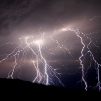How Celestia and Luna "Raise" the Sun and Moon
-
Similar Content
-
- 95 replies
- 7,265 views
-
- 1 reply
- 131 views
-
- 25 replies
- 1,139 views
-
- 25 replies
- 4,363 views
-
Celestia and Luna- a thousand years without. Celestia, Luna, or the elements to blame?
By ManaMinori,
- elements of harmony
- my little pony: friendship is magic
- (and 2 more)
- 2 replies
- 693 views
-
-
Recently Browsing 0 members
- No registered users viewing this page.






Recommended Posts
Create an account or sign in to comment
You need to be a member in order to leave a comment
Create an account
Sign up for a new account in our community. It's easy!
Join the herd!Sign in
Already have an account? Sign in here.
Sign In Now